At this point in my self-study program, I am losing a lot of steam. I no longer have the money to buy supplies or run my business, so the amount that I have to do has decreased significantly. When I started this project I was working on it for 9 hours a day. Now I'm down to about half an hour, when I get around to it. As I run out of supplies I run out of things that I can do, and it's really frustrating, which makes me avoid it even more.
On the other hand, I've discovered a really cool opportunity that I hope I will be able to pursue in the future. PNCA has a Pattern Design and Printing Endorsement Program. This is a continuing education program that helps with professional training, rather than taking classes for interest. It must be completed in a year and includes a self-directed project, sort of a thesis. Having deadlines will likely encourage me to keep working. I actually was fairly motivated in college and university, in spite of the fact that lecturing is a really inefficient way to teach and learn. So I think I would benefit from this kind of outside structure.
I have been doing some things lately. I listened to two art history podcasts in the last little while. The first was on The Embarkation of Cythera. That was a lousy podcast. The narrator swooned the whole time about how whimsical the painting was rather than discuss what was going on in the painting. The second one that I listened to was about the famous painting, Maids of Honor by Valezquez. This narration was considerably better. It described the moment in time caught in the painting. The royals had just been sitting for a portrait, with the king and queen looking on (they can be seen in the mirror). A court gentleman is opening the door for the party to exit and is awaiting further instructions. The princess is thirsty and is being given a little cup of water. There was a ceremony that was to be performed whenever the princess was given water: her maids were supposed to hand it to her and kneel while she drank. She had a dwarf and a little boy go everywhere with her to amuse her, and in this painting the boy is trying to wake up the dog to get a rise out of him. The painter can be seen finishing off his painting. The canvas takes up the entire height of the painting. The cross on his chest was painted after he died to make him seem suited to this royal scene.
I've progressed a bit on my embroidery and finished the last two circles. I need to fill in the grid now. These are the last two.
On the other hand, I've discovered a really cool opportunity that I hope I will be able to pursue in the future. PNCA has a Pattern Design and Printing Endorsement Program. This is a continuing education program that helps with professional training, rather than taking classes for interest. It must be completed in a year and includes a self-directed project, sort of a thesis. Having deadlines will likely encourage me to keep working. I actually was fairly motivated in college and university, in spite of the fact that lecturing is a really inefficient way to teach and learn. So I think I would benefit from this kind of outside structure.
I have been doing some things lately. I listened to two art history podcasts in the last little while. The first was on The Embarkation of Cythera. That was a lousy podcast. The narrator swooned the whole time about how whimsical the painting was rather than discuss what was going on in the painting. The second one that I listened to was about the famous painting, Maids of Honor by Valezquez. This narration was considerably better. It described the moment in time caught in the painting. The royals had just been sitting for a portrait, with the king and queen looking on (they can be seen in the mirror). A court gentleman is opening the door for the party to exit and is awaiting further instructions. The princess is thirsty and is being given a little cup of water. There was a ceremony that was to be performed whenever the princess was given water: her maids were supposed to hand it to her and kneel while she drank. She had a dwarf and a little boy go everywhere with her to amuse her, and in this painting the boy is trying to wake up the dog to get a rise out of him. The painter can be seen finishing off his painting. The canvas takes up the entire height of the painting. The cross on his chest was painted after he died to make him seem suited to this royal scene.
I've progressed a bit on my embroidery and finished the last two circles. I need to fill in the grid now. These are the last two.
These are square filling stitch (on the left) and overcast stitch.
I managed to make a bit of progress on my spinning before running out of fiber. Instead of flicking the spindle and pulling on the fiber to thin it out as I went, I learned to take the spun part and pinch right at the top, spin the spindle as much as I could, pinch the top of the spun part with the other hand, pull on the fiber with my first hand, pinch the top of that, and let go of the bottom pinch and watch the twist work its way up my pulled fiber. It worked out really well. On the left is my yarn spun with my previous method, and on the spindle is the yarn spun with the new method. The new method produces thinner, more consistent yarn.
I managed to make a bit of progress on my spinning before running out of fiber. Instead of flicking the spindle and pulling on the fiber to thin it out as I went, I learned to take the spun part and pinch right at the top, spin the spindle as much as I could, pinch the top of the spun part with the other hand, pull on the fiber with my first hand, pinch the top of that, and let go of the bottom pinch and watch the twist work its way up my pulled fiber. It worked out really well. On the left is my yarn spun with my previous method, and on the spindle is the yarn spun with the new method. The new method produces thinner, more consistent yarn.
Finally, I've been doing a few more drawings. I like this book because the drawing assignments usually take only about 20-30 minutes. When I work on something longer than that I start to hate drawing. Even the 30 minutes is a bit of a stretch for me. I used to loooooove drawing, so I don't know what's up with me. The first assignment I did was a 3/4 view of my eyes, which weren't that hard to draw but gave me eyestrain. The second one is a glass bottle. I was to capture the shapes that I saw in the bottle. I started out that way but with the finishing I don't know if you can see that that's how I did it.

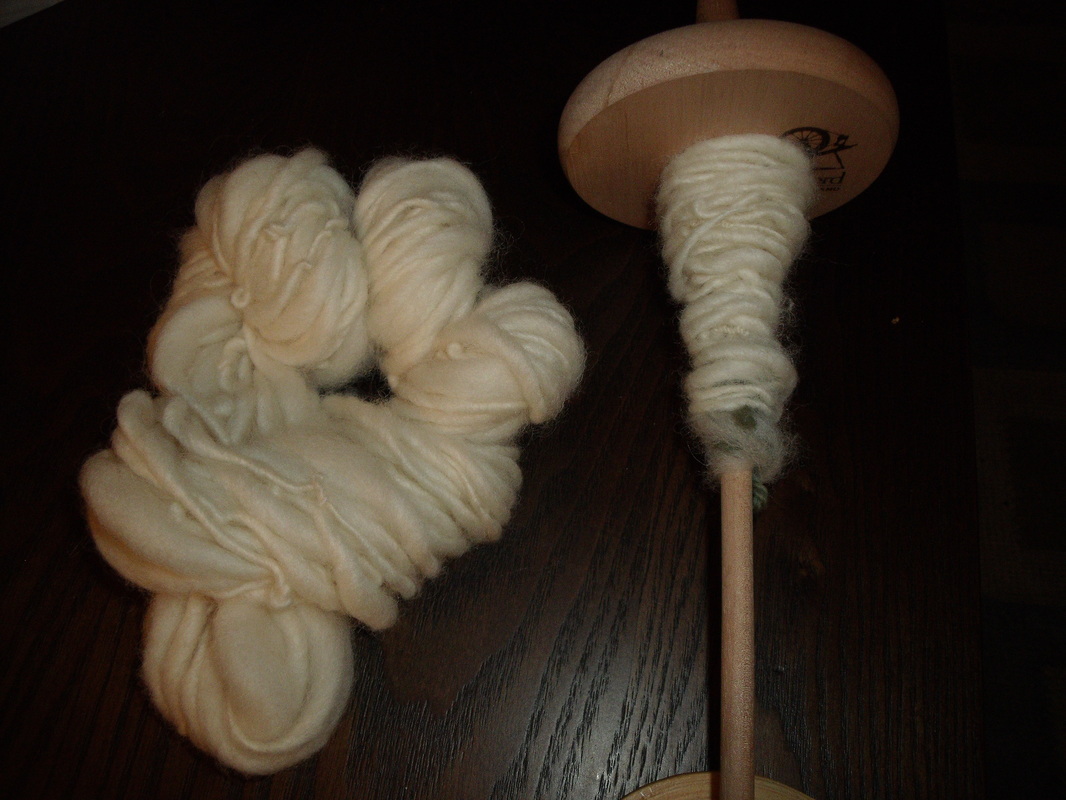
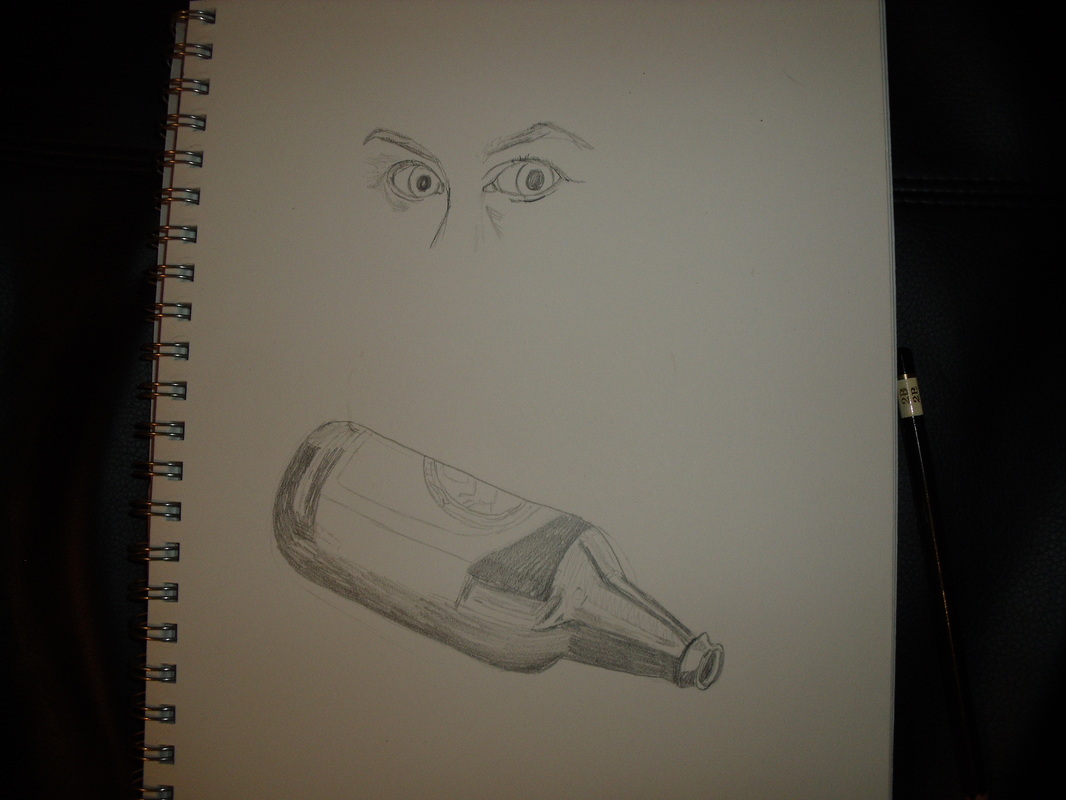
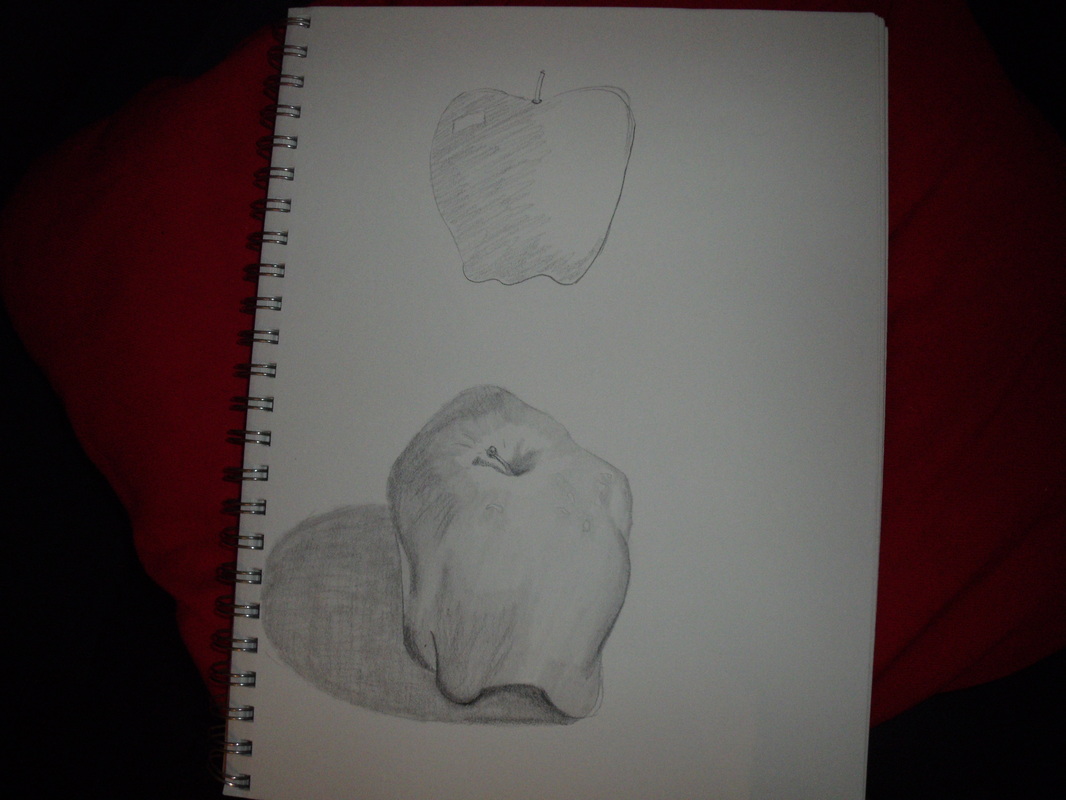

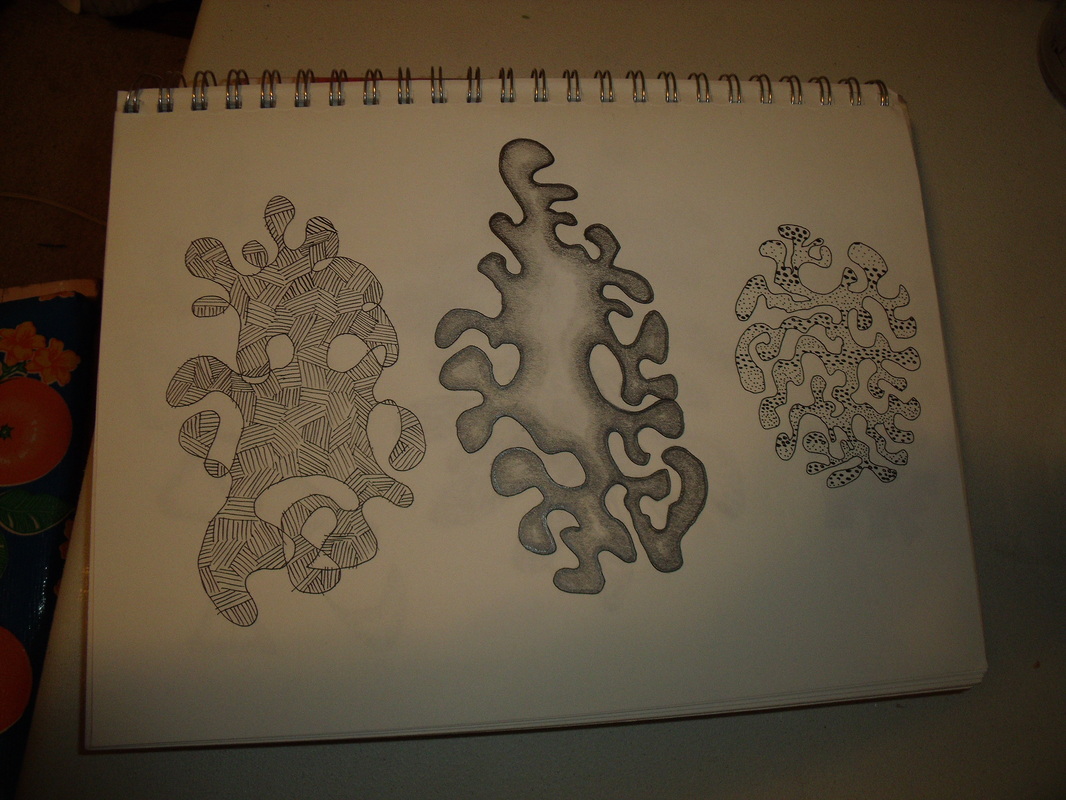
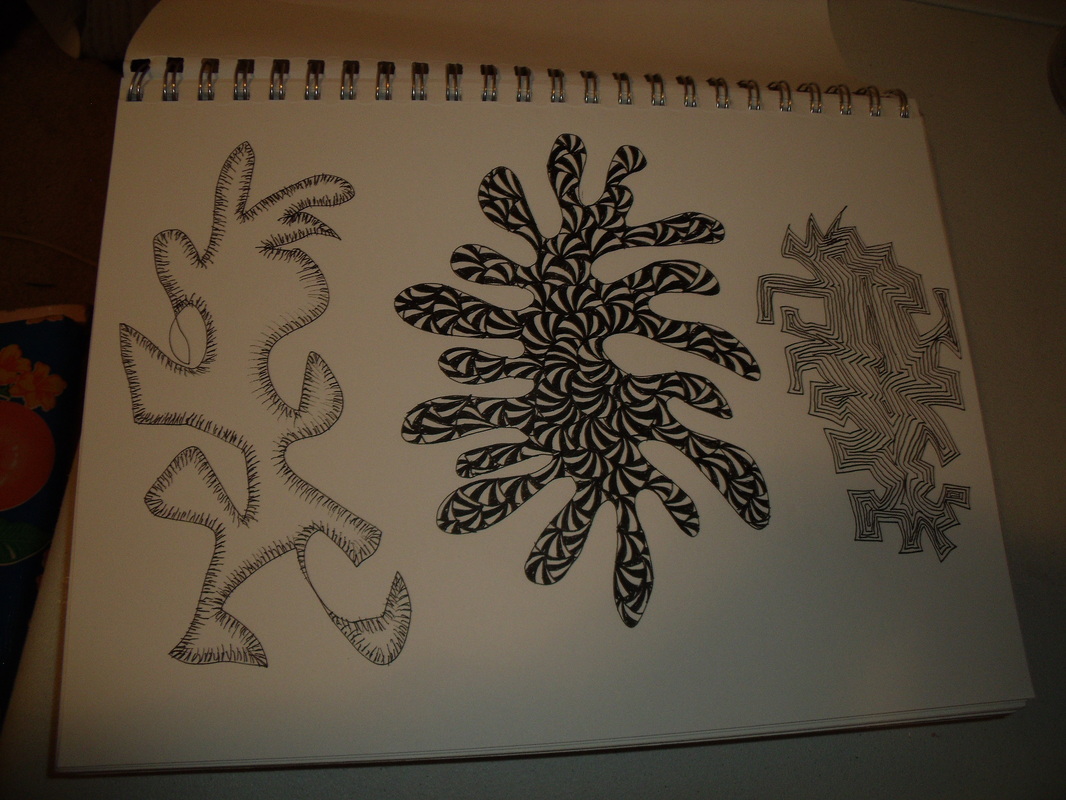
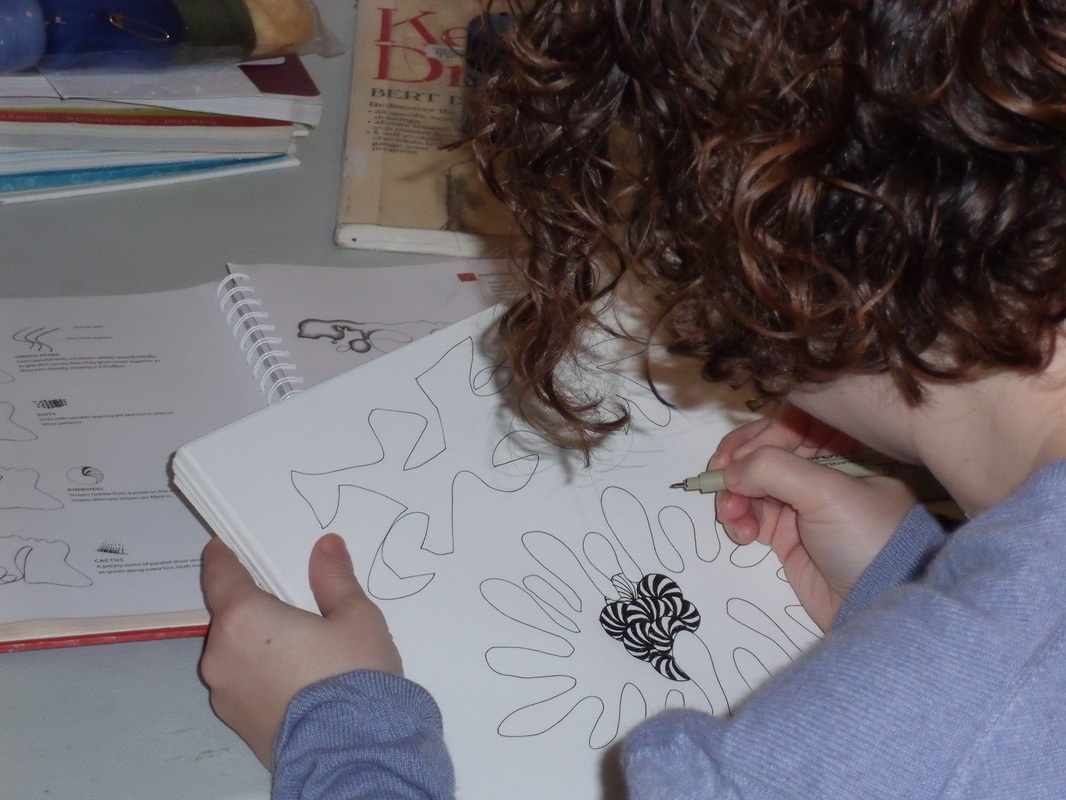
 RSS Feed
RSS Feed
